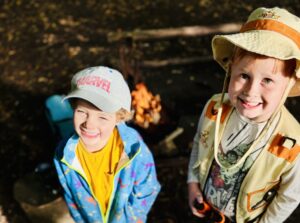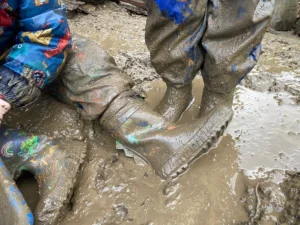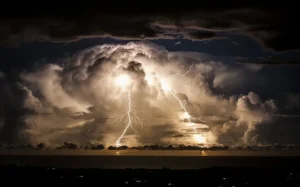With safety underpinning everything we do at any Forest School session I thought it pertinent to write our latest blog about something which we get asked so often; Is it too windy/wet/cold/muddy/thundery/rainy/weathery to run the session today? And I think the easiest way for me to relay just how much detail we go to at Green Planet to ensure your children (and our staff) are safe is to show you our poor weather policy.
Green Planet Forest School
Poor Weather Policy
Last review date: Sept 2023
Next review date: Sept 2024
Safety First
In line with our existing risk assessment policy and subsequent site surveys the safety of all attendees; children, staff and volunteers is paramount. It is important to be mindful that challenges relating to the weather such as wind, rain, snow and ice can increase risk, but also that they can increase benefits such as learning to risk assess weather conditions and situations, to learn to moderate and manage risk and also present the learner with opportunities to develop ways to maintain positivity. (See: There’s no such thing as bad weather)
Cold conditions can present the additional risk of hyperthermia during longer outdoor sessions. There is a degree of shared responsibility between parents and schools to ensure each child has appropriate clothing for the conditions, however it is at the discretion of the Forest School leader to exclude any learner who arrives for a session in clothing which in itself presents risk. Ie. inappropriate footwear like sandals, short trousers or sleeves, insufficient water resistance or insulation etc. However we will always attempt to avoid exclusion by first enquiring if spare clothes may be available from the school or if parents are able to bring additional or replacement clothing prior to the lesson.
Weather Conditions of Concern
There are two weather events which are cause for concern and these will be monitored and assessed thoroughly by the Forest School Leader prior to and during the session. These are strong winds and electrical storms. The risk they pose may vary depending on the site, its location, prevalence of high trees, risk of falling branches from specific tree types, level of exposure to open winds and gusts and so on. Note that strong winds and electrical storms do not automatically mean a session will be cancelled. Assessments are made in the following ways:
Electrical Storms
It is worth noting that thunder is the sound of lightning happening. The speed of light (lightning) travels faster than the speed of sound (thunder) and thus the distance and direction (whether incoming or outgoing) of a storm can be measured and monitored. In fact this can be done simply enough that it can be taught to children, one benefit being to alleviate some fear of thunder storms. Your distance from a thunderstorm can be estimated by measuring the time between seeing the lightning flash and hearing the start of thunder. The length of this interval in seconds can be divided by three to give an approximate distance in kilometres or 5 for an approximate distance in miles (Credit: Met Office link here). In the case of an inbound storm, one which is predicted by the Met office and/or can be witnessed audibly and visually will likely result in a cancelled outdoor/woodland session. However if a storm has landed and can be measured as travelling away from the Forest School site, the Forest School leader may consider it safe to run the session if the estimated distance is greater than 12 miles and increasing. Note: Lightning can strike up to 10 miles away from the centre of a storm. (Source: Met Office)
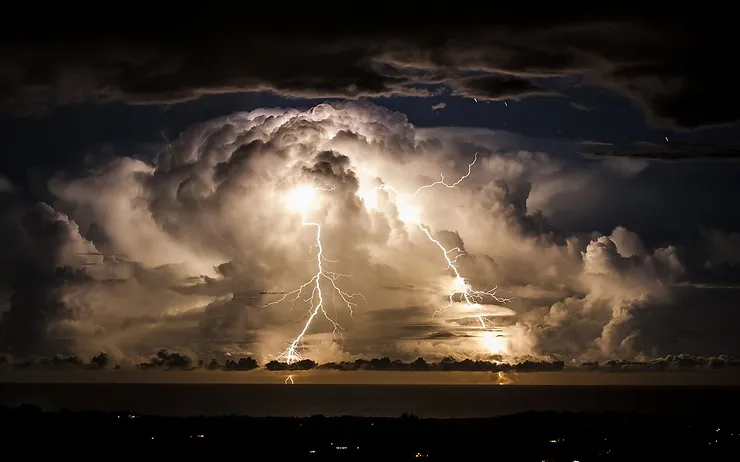
Strong Winds
Wind speed as a mean/average and gusts will be measured in two ways. Incoming weather will always be monitored by the Forest School leader using the latest data from the Met Office. During changeable weather the Met Office mobile app is regularly checked in order to assess and mitigate any risks. On the ground the Forest School leader will use the Beaufort Scale to make regular visual observations of winds as they develop.
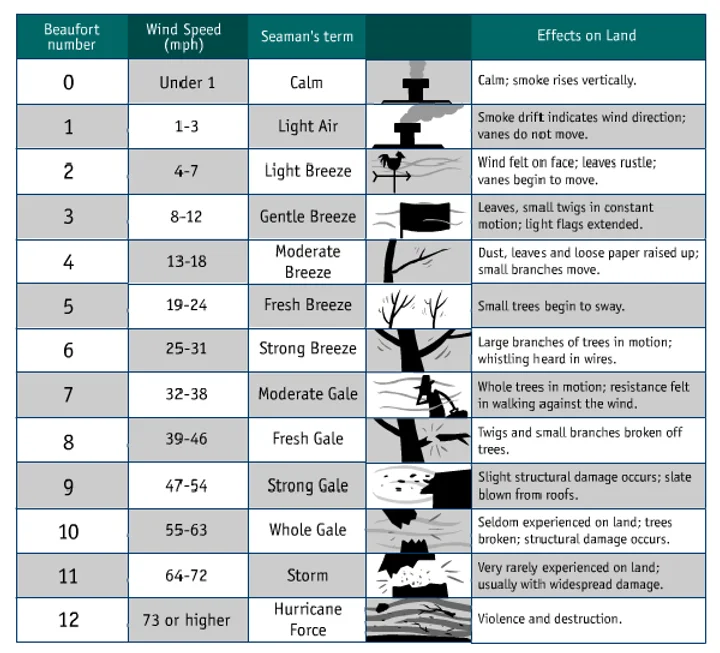
The Beaufort Scale is an empirical measure used to convert physical observations to wind speeds and can be used on land and at sea
Force 7 or greater presents the beginning of an increase of risk and at this point we may consider whether the site is safe to run a session. By force 8 we will always cancel an outdoor/woodland session.
Alternative Provision
In the event of a cancelled or aborted session for any reason the Forest School leader will provide an indoor session with a Forest School theme. This will usually be a craft or science based activity appropriate to the learner group. It is the responsibility of the school to provide an indoor space suitable for the group size and this would normally have been agreed in advance at the point poor weather has been predicted.
In Summary
To summarise all of that all that’s left to say is that we do and will always take the weather seriously to ensure that all who attend our sessions are safe, so never let the weather, or threat of it, put you off of booking. As long as children attend in plenty of warm layers (rather have it and not need it than need it and not have it) with a water proof overlayer and spares just in case, they almost never so much as notice the weather because they’re having too much fun!
Stay muddy!
Mr Mud
